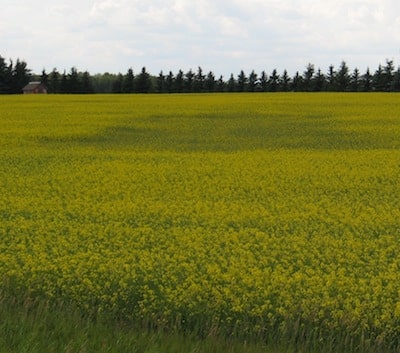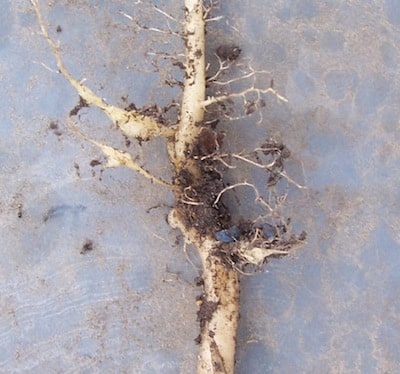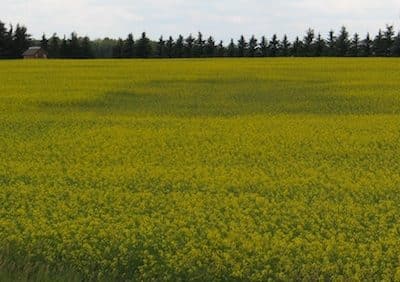Check patches of prematurely ripening canola for signs up disease. Dig up roots to check for clubroot galls.
Early infection at the seedling stage can result in wilting, stunting, yellowing and even death of canola plants in the late rosette to early podding stage.
Infection that occurs at later crop stages may not show plant wilting, stunting or yellowing. However, infected plants may ripen prematurely, resulting in shrivelled seeds.


Typically, it takes six to eight weeks from initial infection to gall formation, but this depends on when the field receives rain. The best time to scout for clubroot symptoms on roots is late in the season, approximately two weeks before swathing, since root galls should be easy to identify at this time.
What does it look like? Roots of infected plants become malformed due to increased cell division and growth, which leads to the development of galls. Clubroot galls tie up nutrients, and severely infected roots can’t transport adequate water and nutrients to aboveground plant tissues. See more here and here.
How did it get there? Clubroot is spread by the movement of soil containing soil-borne resting spores. Soil transport occurs mainly on farm machinery. Clubroot surveys in Alberta have found that almost all new infestations begin near the field access, which indicates that contaminated equipment is the predominant spread mechanism. Any vector that moves soil will move this disease. Wind and water erosion, recreational vehicles, livestock, manure, hay, seed potatoes, common (uncleaned and untreated) seed, exploration/construction equipment, and even footwear may also move this pathogen. The amount of soil required to initiate infection in a new field depends on the number of spores in the soil being moved. Heavily infested soil requires significantly less soil to initiate infection than lightly infested soil. But in general, those vectors that move the greatest amount of soil are the greatest risk. Therefore, any soil transfer from an infested field should be viewed as a risk.
What to do if you see it? The best approach to managing clubroot is to be proactive. Start growing resistant varieties and rotating resistance sources. If R varieties are infected, switch varieties to one with resistance to the strains present. Extend the rotation to more than two years. Grass-in small early-identified patches to prevent movement of soil.
Further reading:
Could also be blackleg or root rot?
Clubroot maps: What do they tell you?
CCC disease scouting guide

